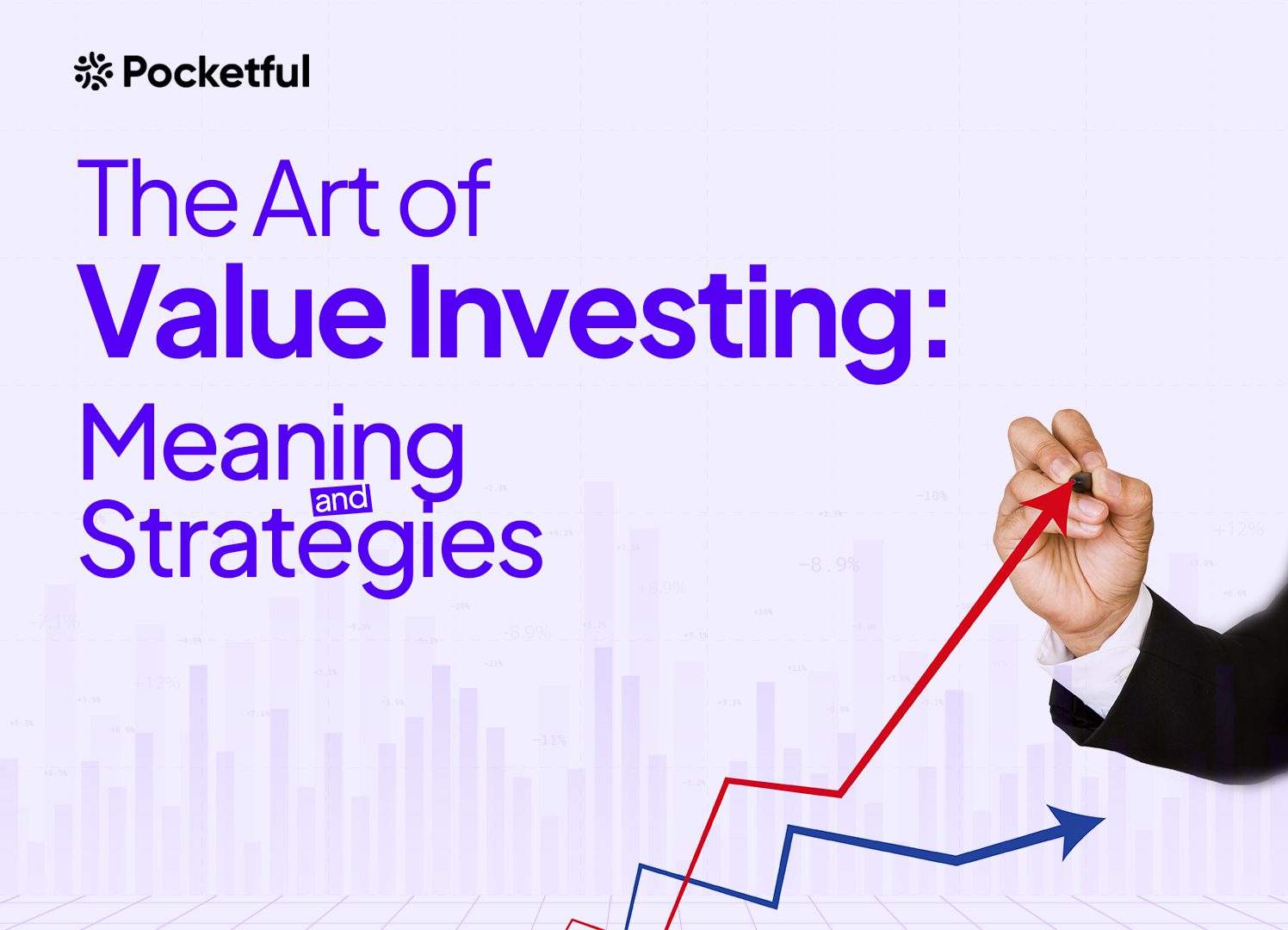We all must save some money, but if our risk-taking capacity does not allow us to take exposure in equity, then the option of bonds seems viable.
Today, we’ll explain what bonds are, how they function, and their kinds.
Introduction of bonds
Bonds fall within the category of fixed-income securities. Bonds are debt securities offered by private institutions and federal and state governments to raise funds to cover their costs. An entity issues bonds to investors to raise funds and, in turn, pays “coupon” payments. The payments are based on fixed interest rates, decided at the start of the tenure.

Characteristics of Bonds
- Issuer – Bonds may be issued by both private and public institutions, including business houses, state and federal governments, and municipalities.
- Face Value – Also referred to as the par value or redemption value. It represents the nominal value of security in the eyes of the issuer. This value, along with the interest component, is returned to the investor on the maturity date of the bond.
- Coupon Rate – It is the interest (on face value) paid out periodically to the investor.
- Tenure – It relates to the duration of bond issuance; for example, if a bond is issued on January 1, 2020, for a tenure of five years, its maturity date will be January 1, 2025.
- Issuance of Bonds – Bonds are initially issued on the primary market and subsequently traded on the secondary market.
- Ratings – The task of rating the bond based on the company’s creditworthiness is carried out by several credit rating firms that perform a thorough analysis of both the issuer and the bond itself.
- Yield to Maturity (YTM) – YTM is the bond’s internal rate of return (IRR) if the investor holds the bond till maturity.
Bond issuance process
- The borrowing entity prepares a bond indenture that contains all the relevant details, such as the par value, coupon rate, maturity date, tenure, and credit rating.
- The bond indenture is then circulated in the primary market to accept applications from investors.
- The borrower then regularly pays the coupon amount to the bondholder, and the borrower can default only in case of financial turmoil.
- The unallocated applications are returned to the investors, and allocated investors are sent the bond confirmation that acts as proof of lending to the issuer.
- The borrower then regularly pays the coupon amount to the bondholder, and only in case of financial turmoil can the borrower default.
- At the end of the tenure, the borrower pays the face value of the bond and any accumulated interest.
Types of Bonds
Bonds are divided into various groups according to their characteristics.
Treasury Bonds
The central government issues bonds of this kind, with maturities ranging from ten to thirty years. With little to no credit risk, it is considered the safest bond.
Municipal Bonds
The municipal or state governments issue these bonds to generate money for the state’s welfare projects.
Corporate Bonds
Corporate entities issue these bonds to generate money for various operational needs. While they often offer greater yields than government bonds, these bonds also carry a higher risk.
Zero-Coupon Bonds
As the name suggests, Zero-coupon bonds do not make periodic coupon payments but pay the entire interest component at the end of the tenure. These bonds are redeemed at face value and are issued at a discount. Thus turning the discount into the interest component of the bond.
Junk Bonds
The bonds allocated below BBB rating by credit rating agencies are called Junk bonds. These bonds often provide the highest yield but carry the highest risk. These are generally issued by organizations that are prone to default.
Convertible Bonds
This bond has an option to convert the bonds into stocks. These bonds allow the investor to earn greater returns when the company’s shares increase.
Callable Bond
The bond allows the issuer to redeem the callable bonds at a predetermined date before maturity. These bonds protect the borrowers if the interest rate decreases as it allows for refinancing the borrowing at the decreased rates.
Putable Bond
This bond allows the bearer to redeem it at a predetermined date before its maturity. This bond protects the holder from an interest rate increase as it allows the holder to sell the bond back to the issuer at a predetermined price.
Floating Rate Bonds
These bonds’ interest rates fluctuate in line with the repo rates set by the Reserve Bank of India.
Inflation Linked Bonds
The coupon rates on these bonds are typically higher than the overall economic inflation rates. The coupon payments of these bonds are adjusted to preserve their real worth after adjustment of the inflation rate.
Perpetual Bonds
These bonds don’t have a maturity date because the bond’s issuer is not required to pay the par value to the bondholder. As long as they own the bond, the bondholder will continue to receive interest.
CAT Bonds
Insurance companies issue CAT bonds, also known as catastrophe bonds, to investors to help them assume the risk of certain calamities like earthquakes and floods. These bonds typically have a high yield as they come with higher risk.
Capital Gain Bonds
A select few institutions issue these bonds, allowing them to benefit from capital gains made on selling real estate, including buildings and land, under section 54EC.
Advantages of investing in bonds
- Regular Income – Bond investments provide consistent income because the bond issuer is expected to make coupon payments regularly.
- Less volatile – Bonds are well-liked by investors with low-risk tolerance since they are relatively less volatile than equity investments but offer greater returns than normal bank FDs.
- Diversification – Allocating a portion of the portfolio to fixed-income securities lowers the overall risk. Bonds will continue to yield returns even in an equity market decline.
- Capital Preservation – If the company becomes insolvent, bondholders have a higher probability of receiving their principal amount than equity shareholders.

Disadvantages of investing in bonds
- Credit Risk – The bondholder must bear the risk of not receiving their payment obligations in the case of default.
- Lower Return – Historically, in comparison to equity investing, bonds offer a lower rate of return.
- Reinvestment Risk – Reinvestment risk arises when an investor cannot reinvest the interest at the same YTM rate as when the bond was first issued. Failure to reinvest the coupon at YTM rate would result in a decreased rate of return over the tenure of the bond.
- Inflation Risk – Rising inflation over time may cause the purchasing power of bonds, other than inflation-linked bonds, to decline more than equity shares.
Factors that affect bond prices
- Interest Rate – Interest rates and bond prices are inversely correlated. This implies that bond prices may decrease when interest rates rise, and vice versa.
- Maturity Date – When investing in bonds, investors must consider their investment duration. Bonds with longer maturity dates are more sensitive to interest rates, whereas bonds with shorter maturity dates are less sensitive.
- Credit Quality – The price of high credit-rated bonds will rise due to investor demand outpacing that of lower-rated bonds.
- Supply and Demand – Bond price will be impacted by supply and demand; if supply is high and demand is low, bond price will be lower, and vice versa.
Additional factors to be considered
- Credit Risk – Risks of issuer not paying the instalments is called Credit Risk. It is advisable to opt for credit-worthy issuers when shortlisting borrowers in order to limit the risk of default.
- Liquidity of Bonds – An investor should consider bonds that provide greater liquidity, which generally exists in credit worthy issues.
- Investment Goal – When choosing which bond to invest in, you should consider your investment horizon, risk tolerance, and investing goal.
- Maturity of Bonds – Bonds with shorter maturities are less susceptible to fluctuations in interest rates; conversely, the prices of bonds with longer maturities are more unstable.
- Taxation – Since the interest on bonds is taxable according to the income tax bracket, an investor should think about the tax consequences before investing.
Conclusion
Bonds are typically a good option for risk-averse investors who prefer steady returns on their capital rather than portfolio volatility. It is advisable to do your research to find the right kind of bond to buy because each type has a different risk-reward profile.
Frequently Asked Questions (FAQs)
Q1. What is the primary risk affecting corporate bonds?
Ans. The primary risk connected to corporate bonds is default risk, often known as credit risk.
Q2. What kind of bond is the safest?
Ans. Bonds issued by the Government of India are regarded as the safest kind of bonds available in the Indian market.
Q3. What is the primary distinction between YTM and coupon rate?
Ans. The Yield To Maturity (YTM) is a bond’s internal rate of return (IRR) if the investor holds the bond till maturity, and the coupon rate is the set interest paid by the bond’s issuer on its face value.
Q4. Are bond interest payments taxable?
Ans. Yes, bond interest receipts are taxable according to the investor’s income tax bracket.
Q5. Is it possible to sell the bond before it matures?
Ans. Yes, you can sell the bonds on the secondary market before they mature.
Disclaimer: The securities, funds, and strategies mentioned in this blog are purely for informational purposes and are not recommendations.





























